Keeping chickens in your backyard for homegrown eggs is easier than you may think. While chickens were once thought of solely as farm animals, backyard chickens have become increasingly popular, even in urbanized areas.
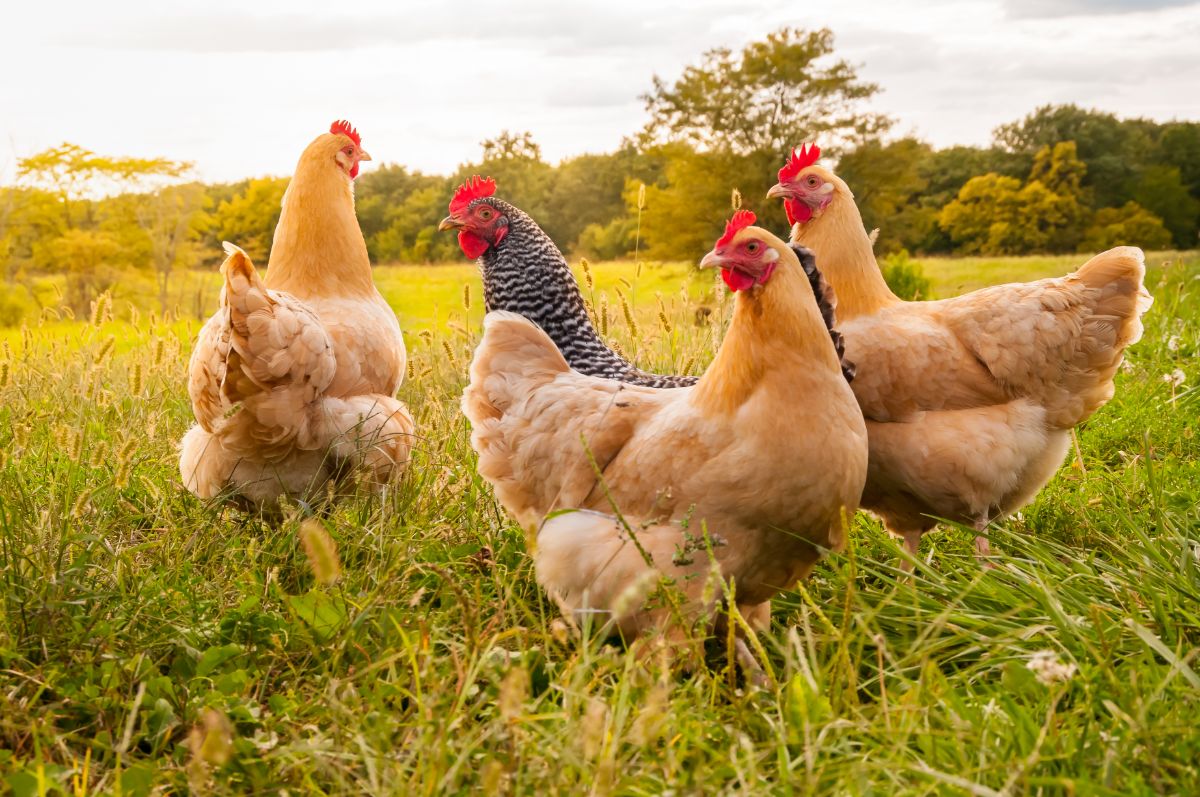
There are few things as rewarding as collecting that first homegrown chicken egg from your backyard flock. But there are other reasons why chicken keeping has been gaining popularity.
Homegrown eggs can be raised organically and, if you free-range your chickens, they can be much cheaper than storebought eggs. What’s more, because you can choose what types of chickens to keep, you’ll be gathering eggshells in a rainbow of colors -- from robin’s egg blue to a deep, chocolatey brown.
Chickens are also surprisingly charming creatures and make wonderful pets for small children too. And, if you’re so inclined, some chickens excel as show chickens and may even win you prizes based on their fine feather patterns and overall appearance.
If you’ve ever thought about keeping chickens in your backyard, this guide is for you. We’ll cover the top chicken breeds for backyards and the features that make each chicken type so unique.
Jump to:
15 best chicken breeds for a backyard flock
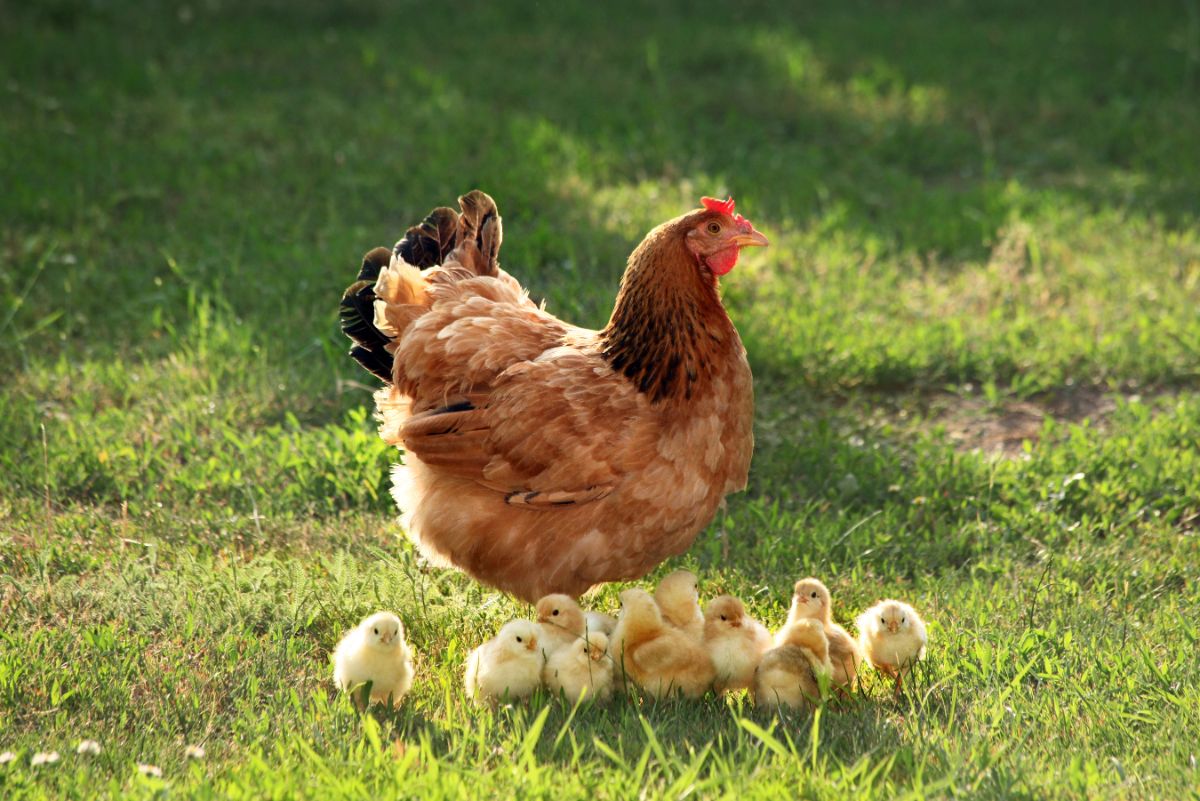
Below are our top picks for the best chicken breeds for a backyard flock. We’ve chosen these chickens based on how easy they are to keep, as well as other important factors like eggshell color, climate hardiness and how productive they are at egg laying. We’ve also noted other key characteristics, such as temperament and the best hens for homes with children.
1. Brahma
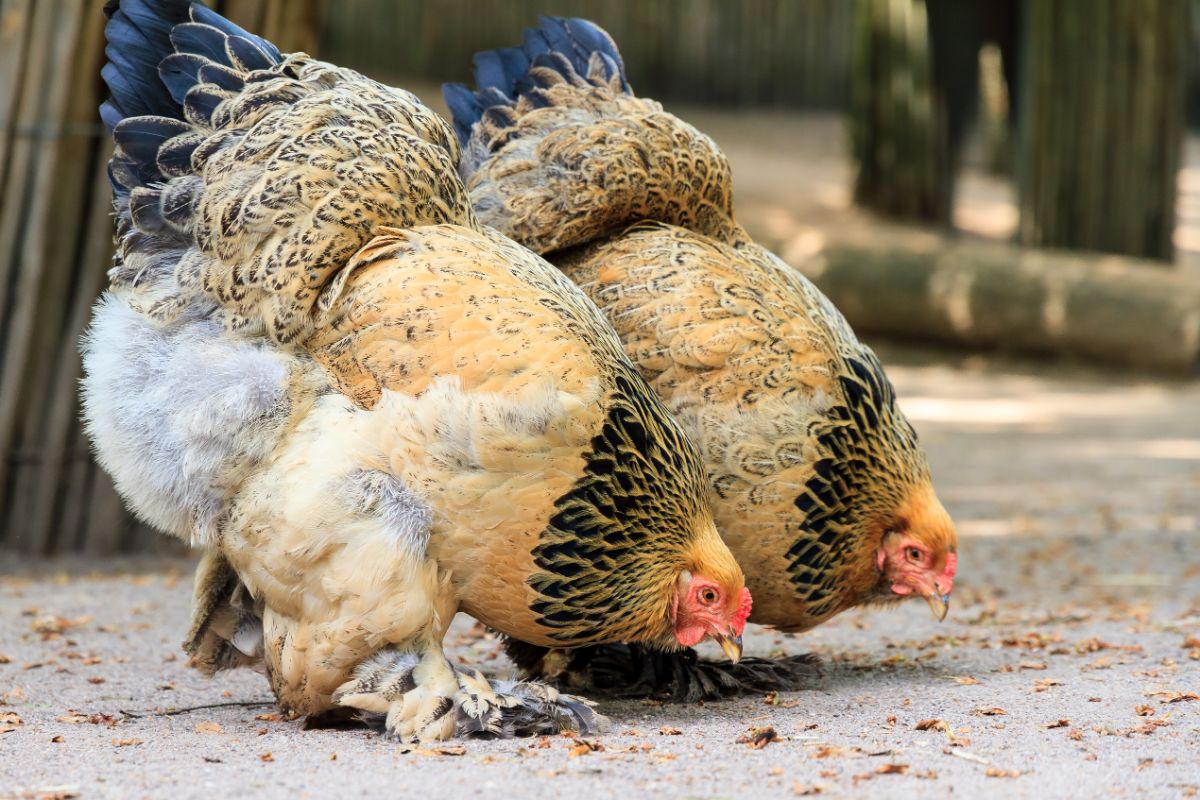
| Breed name: | Brahmas |
| Egg color: | Pale pinkish-tan |
| Size: | Large |
| Color variations: | Light, dark or buff |
| Best known for: | Very friendly; cold hardy; large size |
One of the largest chickens around, brahmas are known as the “gentle giants” of the farmyard. These gorgeous birds are friendly and some of the best hens to try out if you have children or you want some chickens that just like hanging out with you.
Brahmas sport two-toned feathering, coming in light, dark and buff coloration. Thanks to their large size and feathered feet, brahmas are quite cold hardy birds and a solid choice if you live in a cooler location. Brahmas are also reliable egg-layers, even in winter, with shell tones in a pale pinkish-tan hue. Their large size makes them a good choice for meat chickens, too, making them a favorite dual-purpose chicken breed.
A highly popular chicken breed, brahmas were developed in the 19th century in the United States from breeding large birds imported from China.
2. Barred Rocks

| Breed name: | Barred Rocks |
| Egg color: | Pale pinkish-tan |
| Size: | Medium |
| Color variations: | Black and white barring |
| Best known for: | Very friendly; cold hardy |
Another gorgeous breed for backyard eggs, barred rocks (also known as Plymouth Rocks) are one of America’s oldest chicken breeds and were first written about in the 19th century. “Barring” refers to a particular striped feather patterning in some chicken breeds and barred rocks, with their mottled black and white appearance, exhibit barring at its finest.
Another cold-hardy breed, barred rocks are also very docile and tolerant birds and love being handled. They are highly attentive and often act as lookout hens in the flock, helping to alert flock mates to danger (or food!).
Eggs are a pale pinkish-tan tone and a single hen will usually produce about 4 of them a week. A reliable layer, barred rocks are pleasant birds all around and some of the most delightful hens to keep.
3. Black Australorps
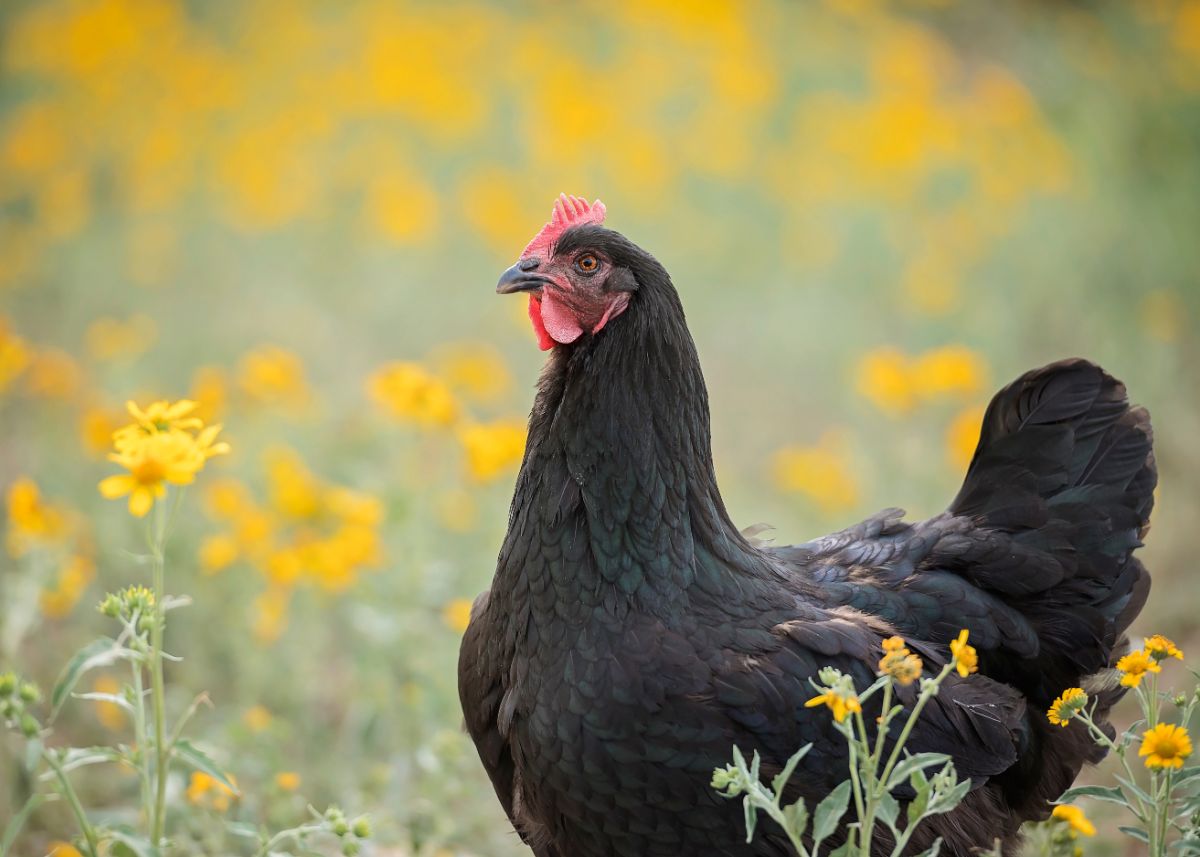
| Breed name: | Australorps |
| Egg color: | Medium brown |
| Size: | Medium |
| Color variations: | Black |
| Best known for: | Very friendly; cold hardy; abundant layer |
A cross between Orpingtons and Rhode Island Reds, black Australorps are another sweet breed and a perfect choice for beginning chicken tenders and seasoned pros alike. Solid black feathering catches the light beautifully with a greenish iridescence that is offset by this chicken’s bright red comb. Developed in the 20th century, black Australorps originally hail from Australia and their name was shortened from the longer “black Australian Orpington.”
Thanks to their carefully selected genetics, black Australorps are prolific layers, producing eggs with warm-tan shells. Cold hardy and attractive, these birds are also quite friendly, although they can take awhile to warm up to strangers. If handled regularly, they make fantastic show birds and children’s pets too.
4. Leghorns
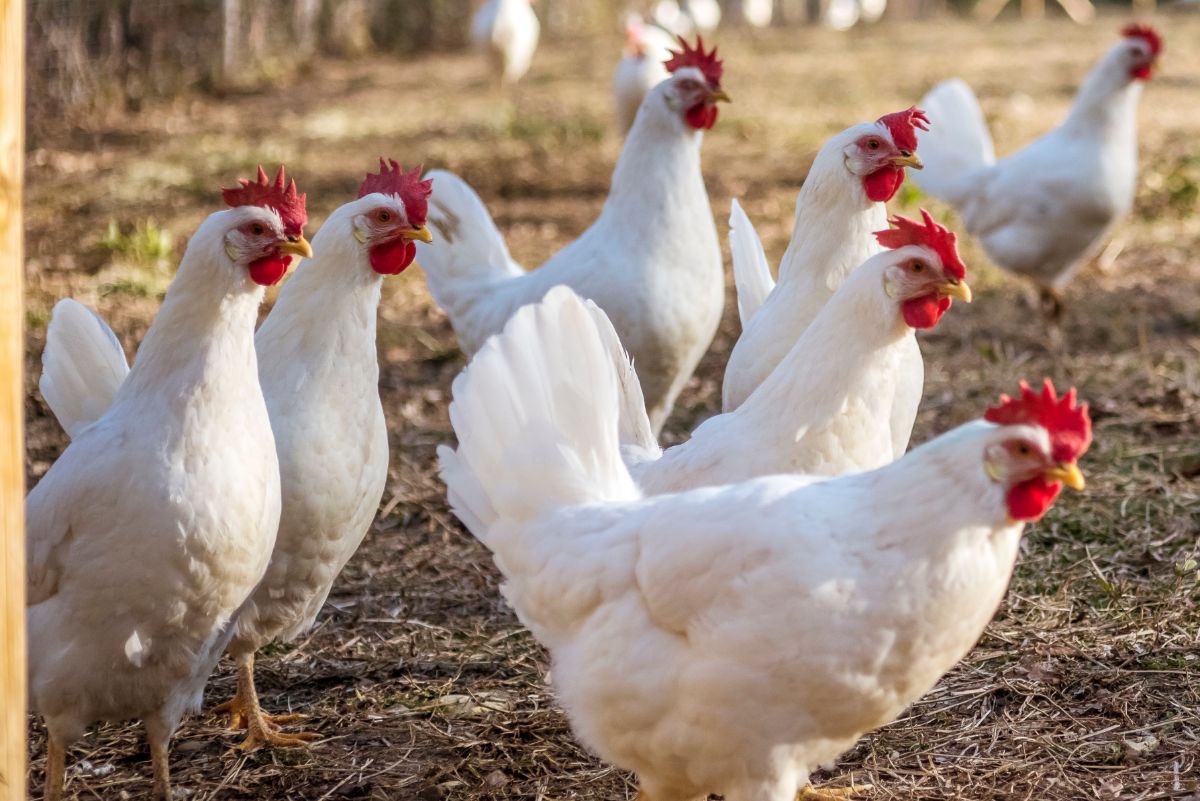
| Breed name: | Leghorns |
| Egg color: | White |
| Size: | Medium to small |
| Color variations: | White, brown, black and buff |
| Best known for: | Prolific egg layers |
If your goal is to gather lots of farm fresh eggs, keeping leghorn chickens is the way to do it. The classic chicken of choice for eggs, leghorns are prolific layers and begin laying long before many other breeds.
It’s a classic misconception that brown eggshells are more natural and “organic” than white ones, but that’s not the case. Eggshell color is determined by the chicken breed and leghorns are the chicken best known for producing bright, white eggs. If you want to dye eggs, you need some leghorns!
Compared to some other chicken breeds, leghorns are smaller and can be a bit flighty, so they aren’t the best chicken type if you want a backyard pal. However, they are a hardy breed and can handle cold conditions well. That said, leghorns do have longer combs which can suffer from frostbite in severe weather, so try coating your chickens’ combs with petroleum jelly to keep them safe.
5. Orpington
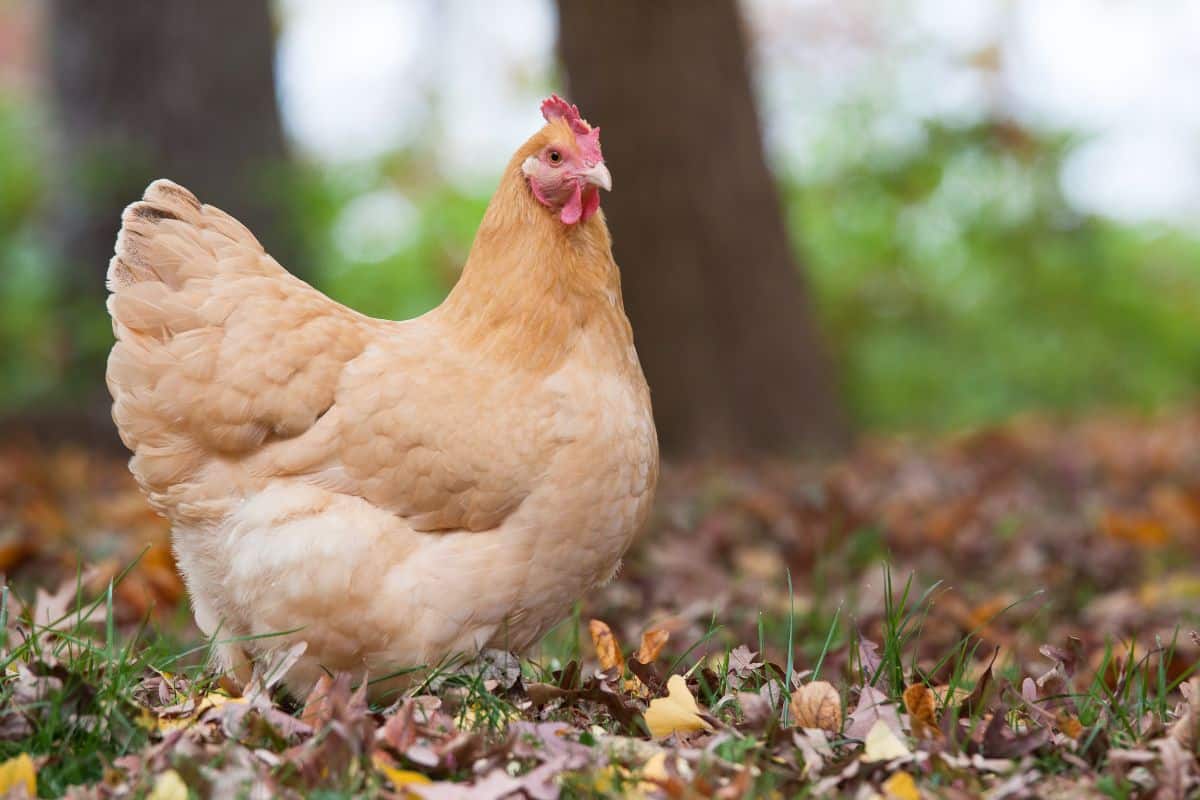
| Breed name: | Orpington |
| Egg color: | Light tan |
| Size: | Medium |
| Color variations: | Buff or black |
| Best known for: | Very friendly; cold hardy |
A relative of Australorps, Orpingtons are often lovingly dubbed the “Golden Retrievers” of the chicken world thanks to their golden feathers and all around bubbly nature. These friendly birds are ideal for young chicken keepers and show well too.
Orpingtons produce tan colored eggshells and really shine as chicken mothers. Because they easily go broody, Orpingtons are a good chicken to have in your flock if you want to raise chicks. They’ll often incubate other hens’ eggs, as well as their own!
With fluffy feathers, Orpingtons do well in colder climates, but they need a bit of shade in hotter spots.
6. Rhode Island Red
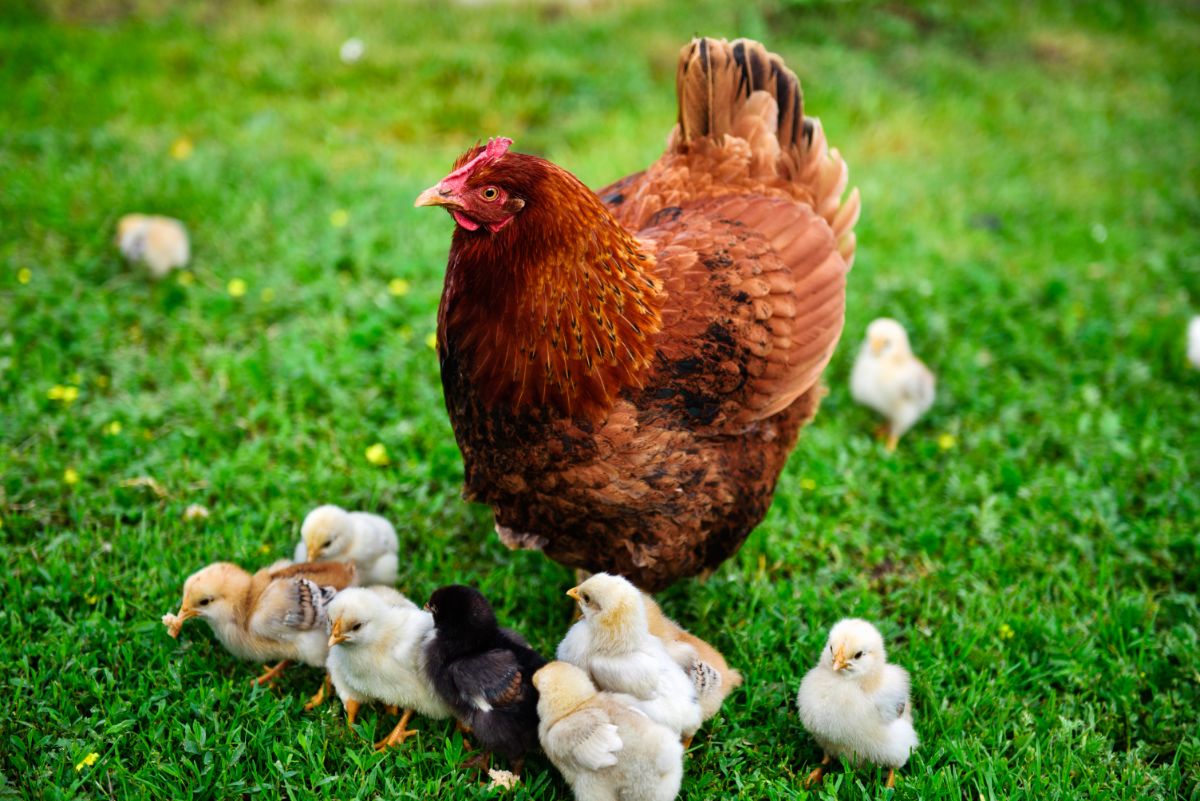
| Breed name: | Rhode Island Red |
| Egg color: | Medium brown |
| Size: | Medium |
| Color variations: | Coppery red |
| Best known for: | Prolific egg layers; hardy overall |
One of the best chickens for eggs, Rhode Island reds are also one of the most popular chicken breeds today. These hardy birds can stand up to the cold and they are just resilient over all. They also are quite friendly and docile with humans, but they like to be the top of the pecking order, so they may become bullies when kept in confined coops.
First developed in the United States in the 19th century, Rhode Island reds are a cross between Malay chickens and brown leghorns, so you know they are prolific egg layers. Expect hens to produce about 5 eggs a week with eggshells in a warm, medium brown.
As their name suggests, Rhode Island reds have bright red, coppery feathers that catch the light beautifully.
7. Araucana
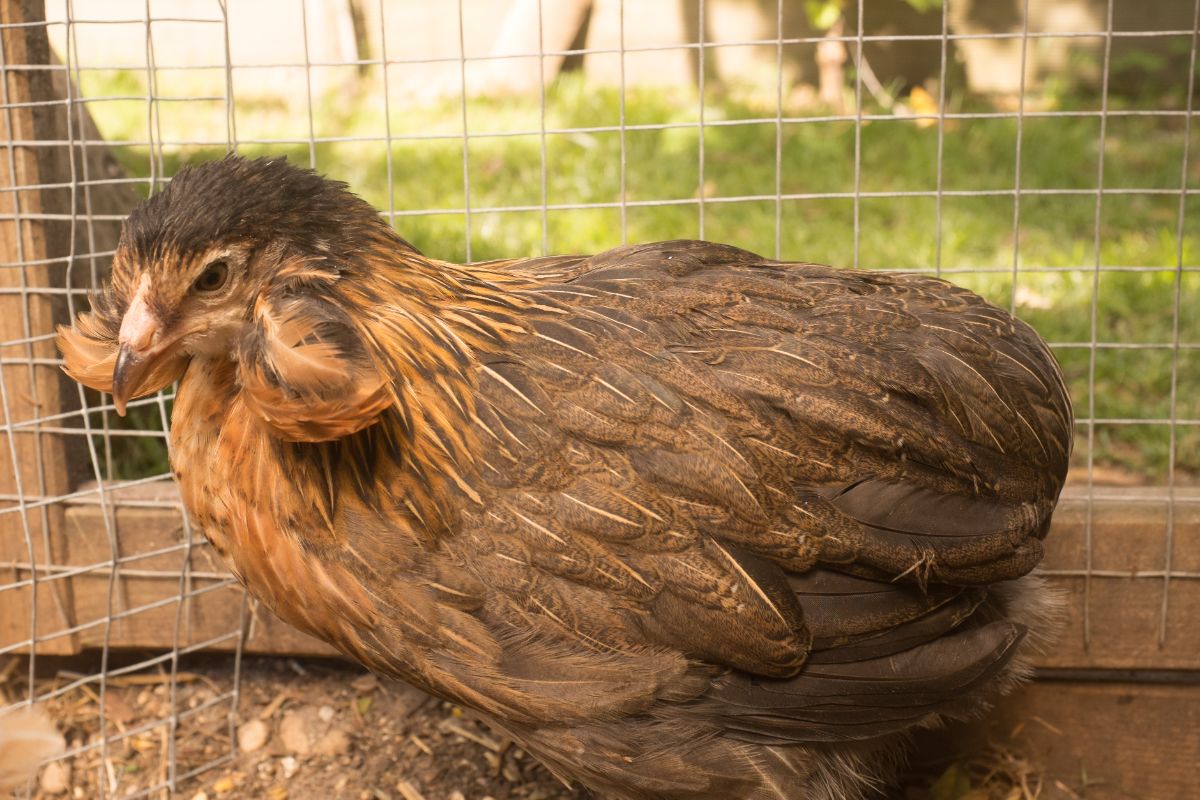
| Breed name: | Araucana |
| Egg color: | Robin’s egg blue |
| Size: | Medium to small |
| Color variations: | Black, Black Breasted Red, Golden Duckwing, Silver Duckwing and White |
| Best known for: | Colorful eggs; very friendly; cold hardy |
For brightly colored eggs, you have to add at least one Araucana to your flock. These delightful birds are originally from Chile and look quite distinct with tailless rumps and adorable curls of feathers on their cheeks. But the main reason people keep Araucana are their robin’s egg blue eggs.
If you’ve ever dreamed of collecting eggs that look like Easter all year long, keeping a few Araucana and a couple of Easter eggers in your backyard coop just makes sense. These easygoing birds are simple to hand tame and perfect for children too.
Although not as heat tolerant as some other chickens, Araucana can handle hotter weather, but they do need access to shade. They are also cold hardy and have pretty, mottled feathers in a range of colors.
8. Easter Egger
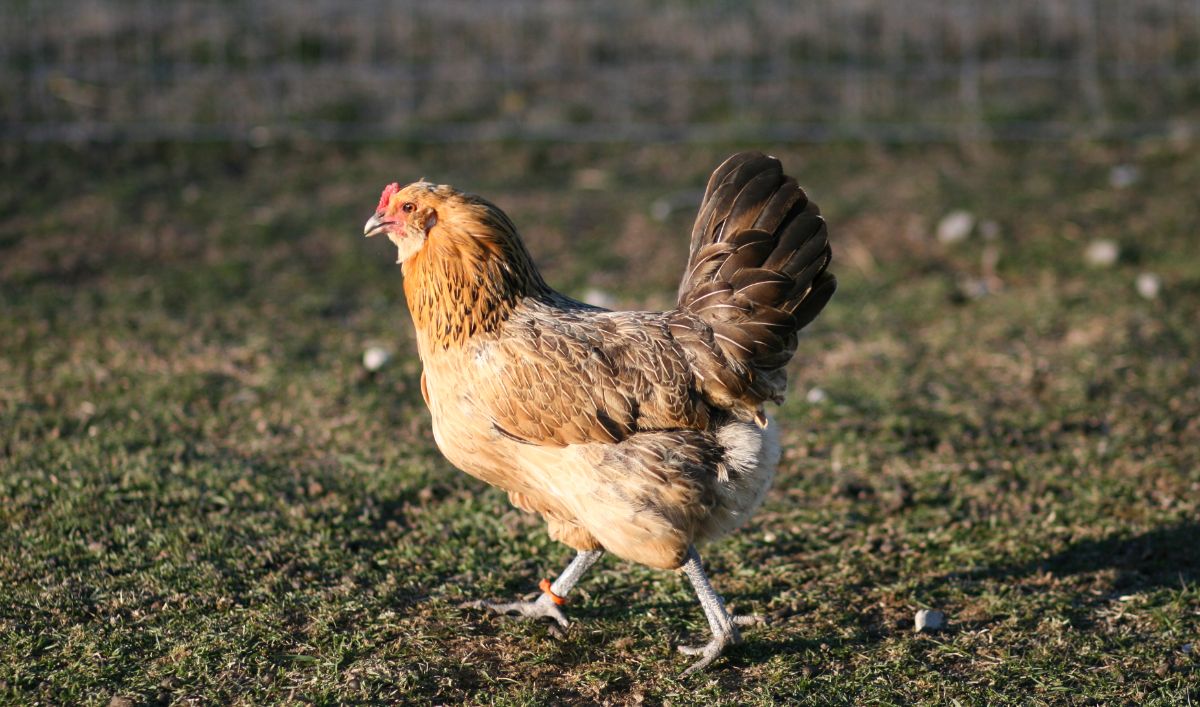
| Breed name: | Easter Egger |
| Egg color: | Assorted colors, including blue and green |
| Size: | Medium |
| Color variations: | Assorted colors |
| Best known for: | Colorful eggs; hardy overall |
Easter egger chickens are a hybrid, rather than purebred, chicken variety. The exact genetic makeup of Easter eggers can vary, but at some point they have been crossed with Araucana or Ameraucana chickens. This genetic diversity translates into a range of eggshell colors, but blueish-green eggshells are quite common with this type of bird.
Olive eggers are specific type of Easter egger that are quite popular too. As the name suggests, these chickens produce olive green eggs, which otherwise can be quite hard to get in backyard flocks.
Since they are hybrid species, Easter eggers and olive eggers will not qualify as show birds, but they make lovely additions to backyard flocks regardless. They are relatively hardy birds with a range of feather colorations. Not as friendly as some of the other breeds on this list, they can become more sociable with frequent handling.
9. Jersey Giant
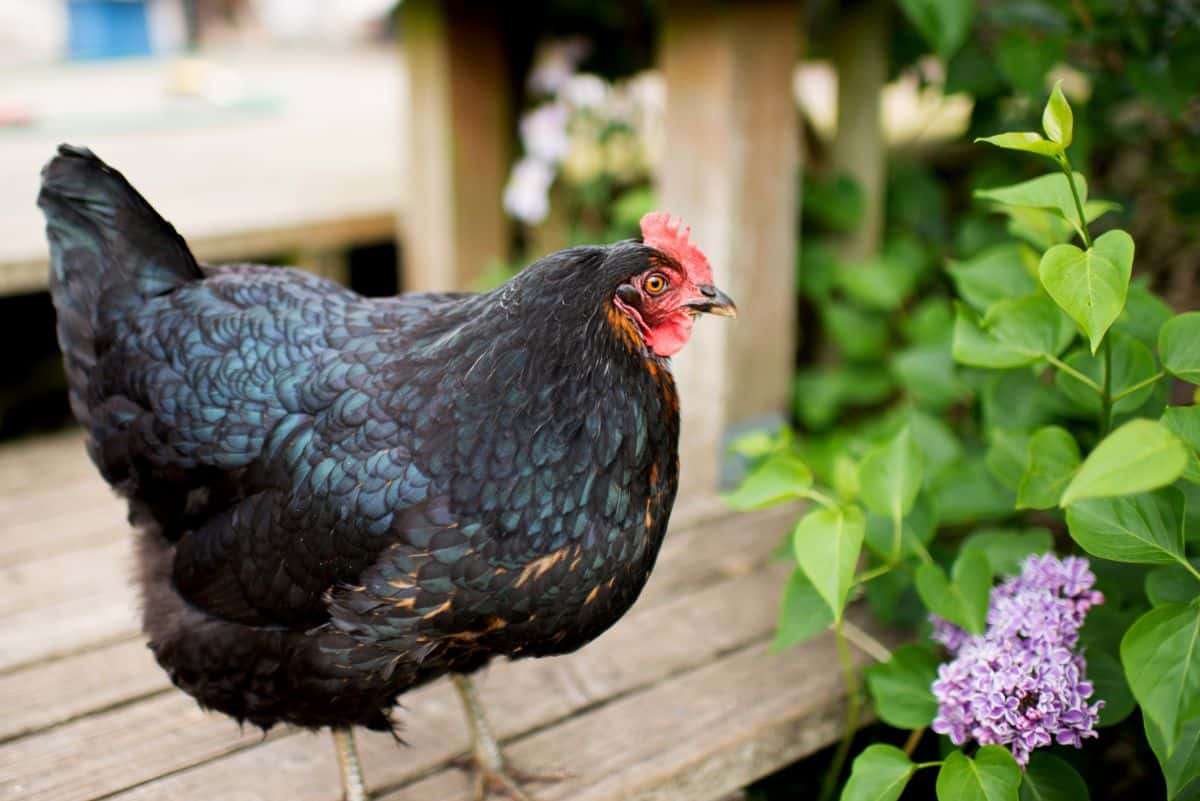
| Breed name: | Jersey Giant |
| Egg color: | Brown |
| Size: | Large |
| Color variations: | Black, white and blue |
| Best known for: | Friendly; great for hatching eggs |
One of the largest breeds of backyard chickens available, Jersey Giant roosters can weigh in at around 15 pounds; however, hens stay smaller and are about the size of full grown Brahmas. An underrated bird, Jersey Giants are docile and friendly and are a heritage breed too. In fact, they were first developed in New Jersey in the 1870’s.
Most commonly, you’ll find Jersey Giants with black feathering, but they do come in blue and white too. Eggshells are brown in color and hens produce reliably, even during the winter months.
A robust bird, Jersey Giants are also quite cold hardy and hens are prone to broodiness, so they’re a good choice if you’re interested in hatching your own eggs.
10. Cochins
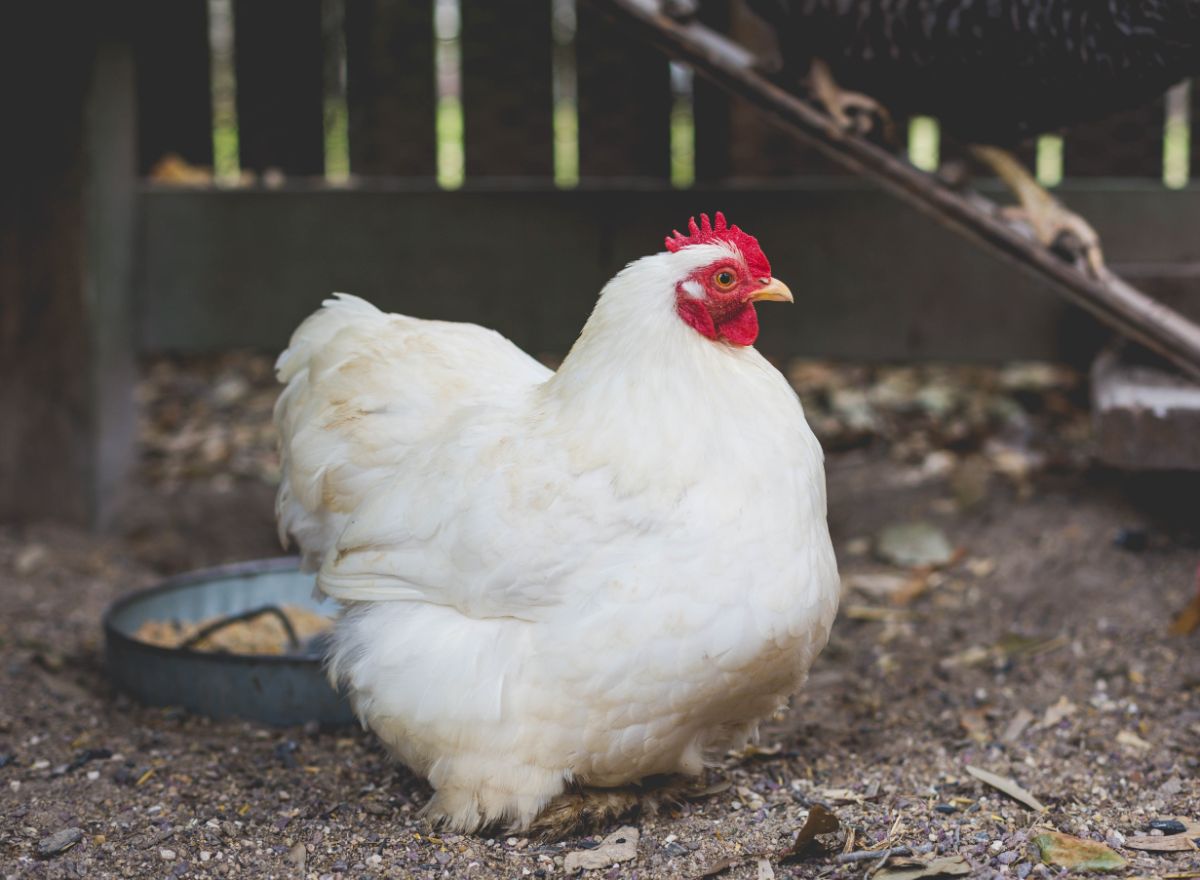
| Breed name: | Cochins |
| Egg color: | Brown |
| Size: | Medium |
| Color variations: | White, blue, buff, partridge, cuckoo, black |
| Best known for: | Friendly; cold hardy |
If you like Brahmas, you’ll love cochins too. A similarly big-bodied bird, cochins are adorable fluff balls, that almost seem to be completely round with fully feathered feet. These features make them especially cold-hardy and just fun to keep overall.
A friendly bird, cochins often like to be the head of the flock and they may become bullies in tight quarters. They also don’t produce as many eggs as some other breeds, but they will reliably produce 2 to 3 eggs per week, which is enough for most backyard chicken keepers.
Eggshells are brown in color and hens will produce eggs throughout winter too, although with less frequency. Coming in a range of feather patterns, cochins can be found in white, buff, partridge and other colors too.
11. Silkies
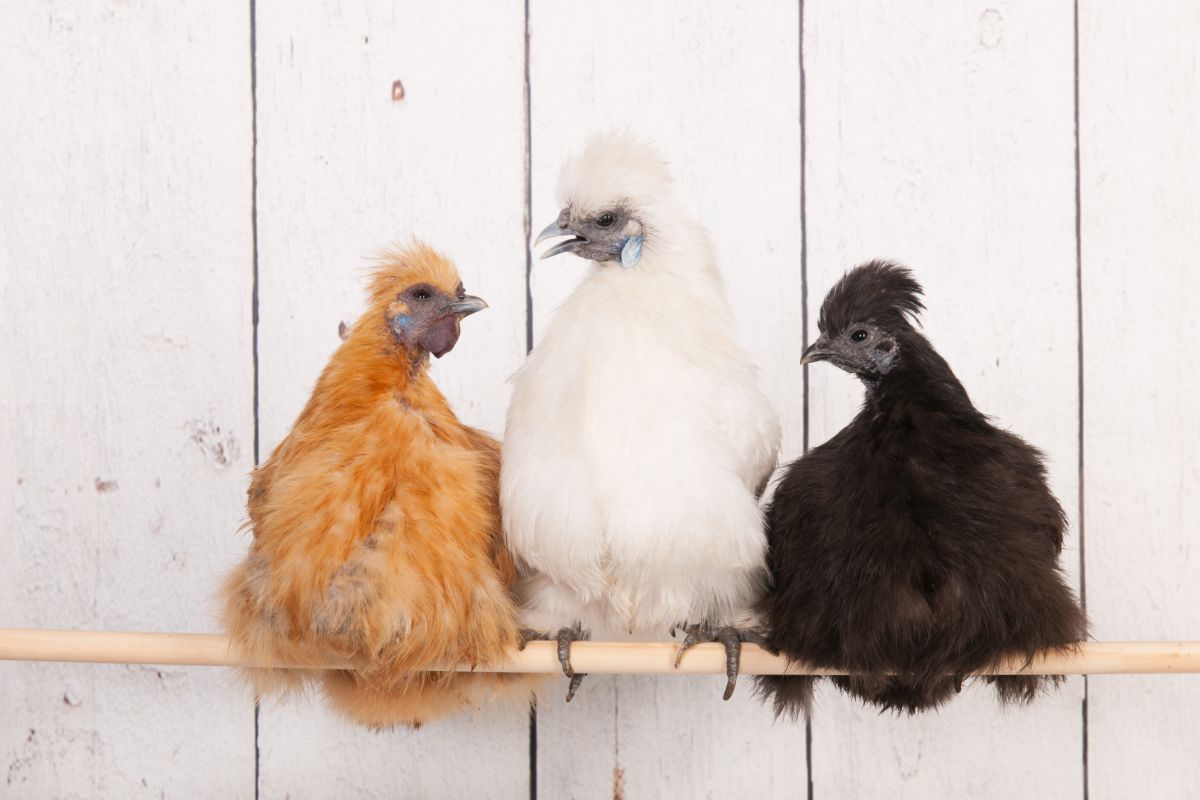
| Breed name: | Silkies |
| Egg color: | Cream colored |
| Size: | Small (bantam) |
| Color variations: | White, blue, buff, black, partridge, splash |
| Best known for: | Friendly; kid favorite; great show bird; cold hardy |
Silkies are a chicken breed that you can’t just have one of. In fact, these wildly popular birds are often so beloved that keepers choose to keep silkies and only silkies.
Silkies are smaller in size and often classified as “bantams.” As a result, they may be picked on by larger birds, although they usually can hold their own quite well.
With a unique feature structure, silkies look furry in appearance, like charming balls of fur. Beyond that, they also have black to bluish skin and a fifth toe (most chickens only have four). A true treasure to keep, silkies originally hail from China and the breed may date back to the Middle Ages; however, silkies were first officially recorded in 1874.
An excellent show chicken, silkies are usually the breed of choice for children. They are also cold-hardy, but their feathers don’t give them as much protection against wet weather, so make sure to provide them with adequate shelter.
12. Black Copper Maran

| Breed name: | Black Copper Maran |
| Egg color: | Dark brown |
| Size: | Medium |
| Color variations: | Black to reddish copper |
| Best known for: | Colorful eggs; docile; cold hardy |
If you want dark, chocolatey brown eggs, black copper Marans are the bird of choice. While they may be more difficult to find than other breeds, you can usually locate them online if your local hatchery doesn’t carry them.
Primarily bred for their dark brown eggs, eggshell color ranges from a deep brown to a warm, reddish-brown and may or may not have speckling. Hens have warm black feathering with iridescence, while roosters feature more coppery tones.
A friendly and docile bird, Marans are hardy chickens in cooler temperatures, but they don’t handle the heat quite as well.
13. Deathlayers
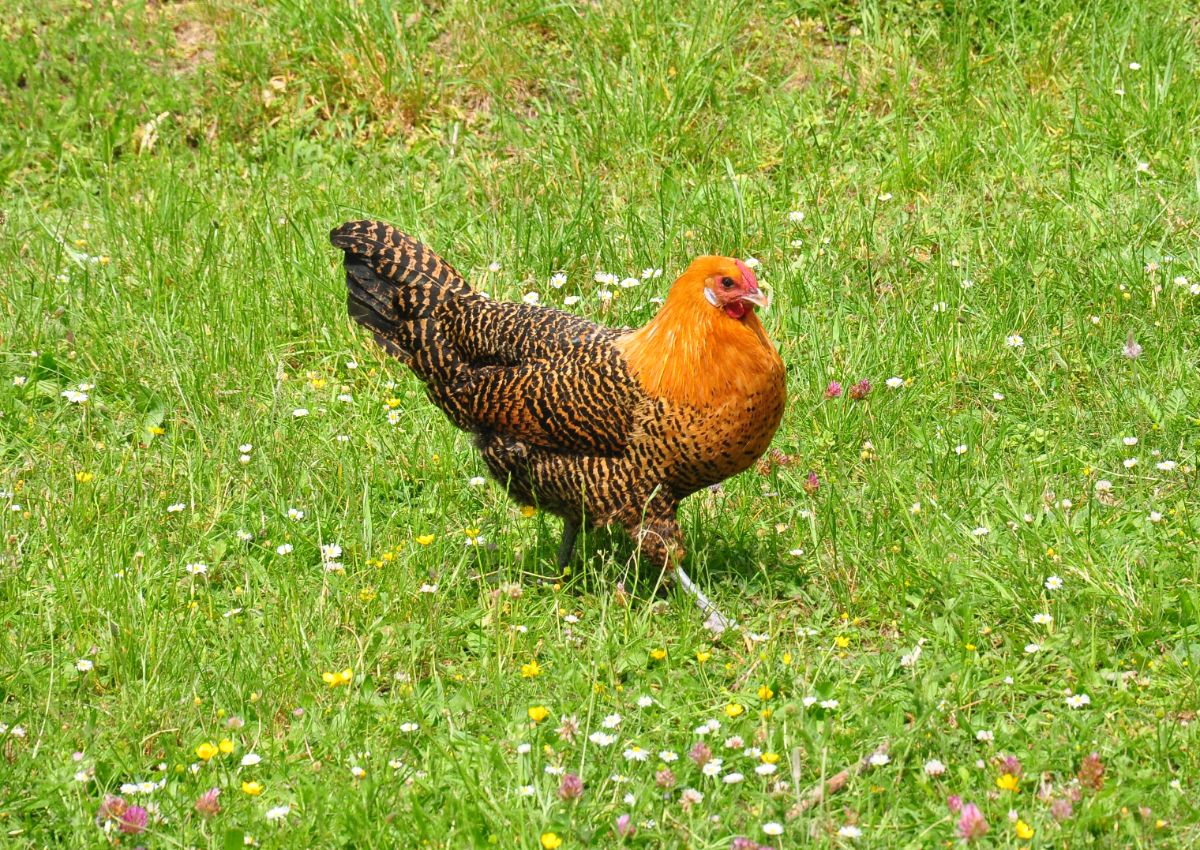
| Breed name: | Deathlayers |
| Egg color: | White |
| Size: | Medium |
| Color variations: | Silver and gold |
| Best known for: | Lifelong layers |
Deathlayers may be difficult to find, but they’re worth the hunt. These rare chickens’ unusual name comes from their unique ability to lay eggs straight through old age. This is impressive considering that most other chicken breeds stop producing eggs reliably after age 4.
An older breed, deathlayers originally come from Germany and most local hatcheries don’t carry them. But you may have better luck finding hatching eggs online.
Adult birds are not particularly friendly and can be a bit flighty, but this can make them better at predator evasion if left to free range. Deathlayers come in gold and silver coloring with highly mottled feather patterns.
14. Polish
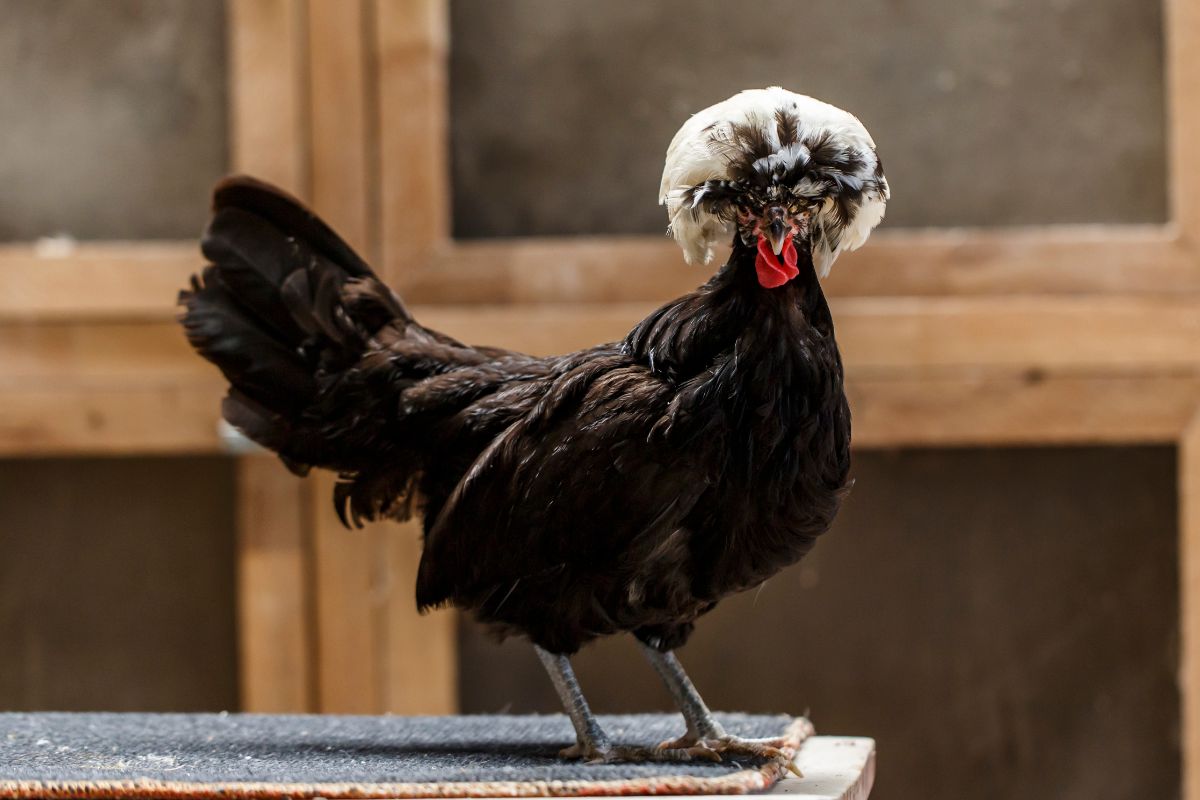
| Breed name: | Polish |
| Egg color: | White |
| Size: | Medium to small (bantam) |
| Color variations: | White-crested black, black-crested white, blue, buff laced, golden laced, silver laced, splash |
| Best known for: | Kid favorite; great show bird; heat tolerant if provided with shade |
Like silkies, Polish chickens are another slightly comical looking breed that chicken keepers can’t get enough of. The head feathers of these chickens are quite puffy and longer than their body feathers, giving their heads a rounded, pom-pom looking appearance.
Coming in both standard and bantam varieties, Polish are also available in many colors; however, black crested white and white crested black colorations tend to be the easiest to come by and quite popular too.
A favorite show chicken, Polish chickens can be quite attentive and at times flighty, but this is often due to reduce eyesight as a result of their fluffy head feathers. Some chicken owners choose to give their Polish chickens a light “hair cut” around their eyes by trimming feathers to improve vision. A well-handled Polish chicken is usually quite friendly and docile with its keepers.
15. Frizzle
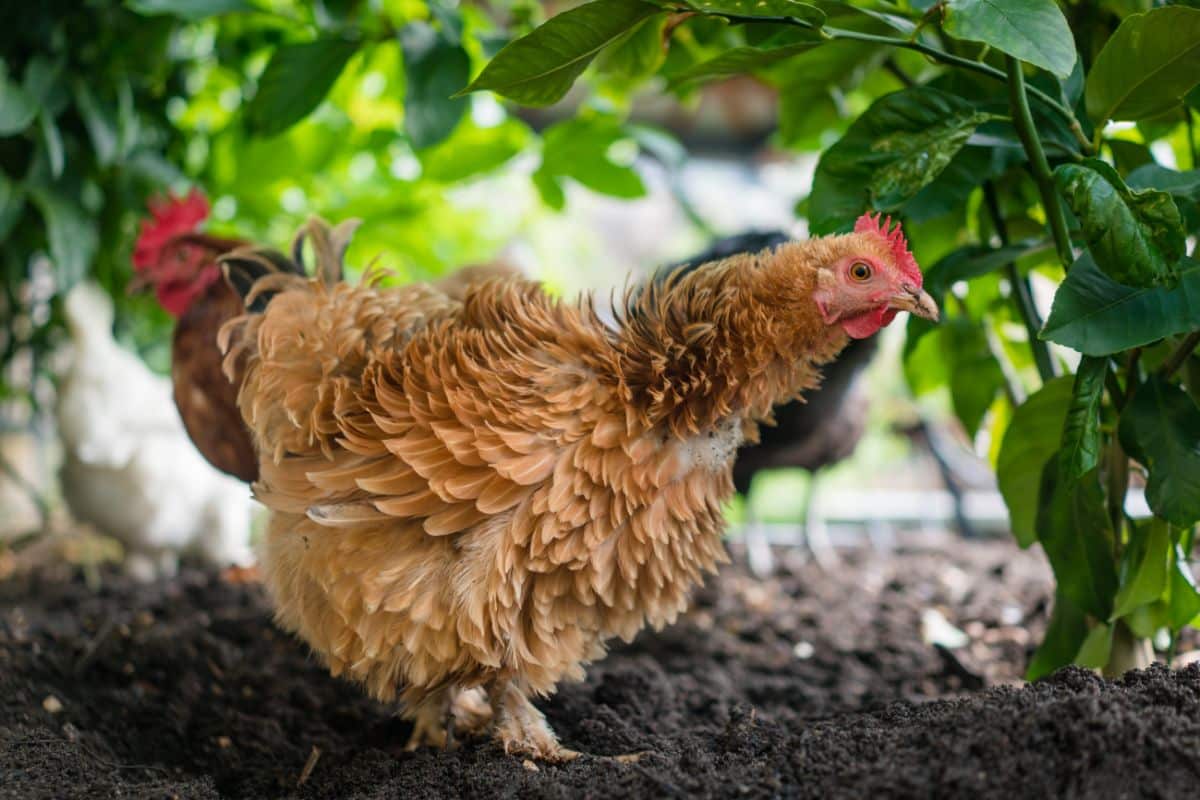
| Breed name: | Frizzle |
| Egg color: | Cream to tan |
| Size: | Medium to small (bantam) |
| Color variations: | Assorted colors |
| Best known for: | Very friendly; kid favorite |
Frizzles aren’t the most productive flock members, but they are often some of the most cherished. These loving chickens usually make excellent “lap chickens” and some keepers even adore their frizzles so much they keep them inside as pets!
Frizzles aren’t exactly a breed, but rather a feather variant. Frizzle feathers are curled, giving the chickens a unique, fluffy appearance. While they aren’t as weather-proof as a result of their feathering, they are irresistibly cute.
Commonly, frizzles are actually bred from cochins, but there are barred rock frizzles, silkie frizzles, Polish frizzles and more. A docile bird, frizzles don’t lay as many eggs as other hens, but they will produce about 2 to 4 eggs per week.
Frequently asked questions
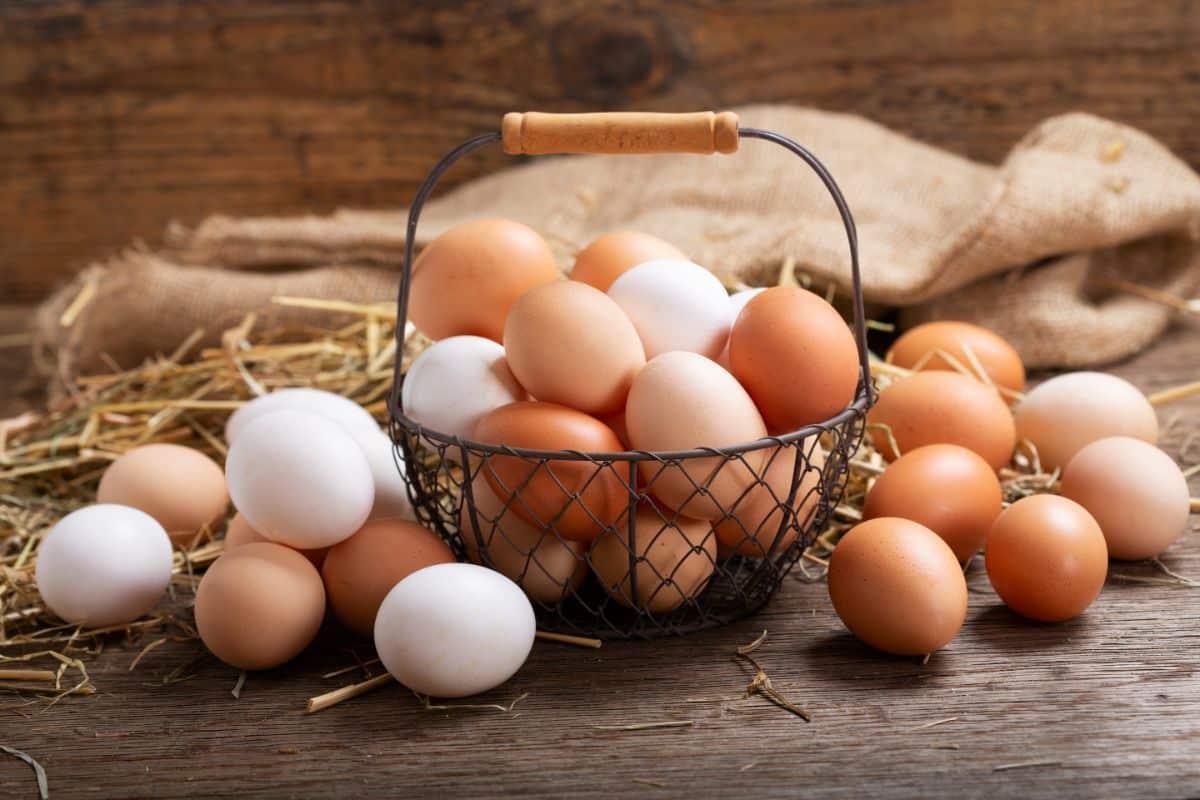
If you’re just starting out with chicken keeping, look for hardy breeds that are able to tolerate the types of temperatures in your area. If you live in a cold spot, look for cold-hardy chickens (like Brahmas). If you live in a warmer region, heat-tolerant hens (like Polish) are a good choice.
Like other animals, chickens have a range of personalities; however, some breeds tend to be friendlier than others. Some of the friendliest chickens around include Brahmas, silkies and frizzles.
Hardy breeds, like Rhode Island reds and barred rocks, tend to have fewer health problems than more delicate birds, like frizzles.
Chickens are social animals, so you never want to have just one chicken. It’s also a good idea to avoid buying too many birds at once, as staggering your chicken purchases over a few years can extend your egg-laying time. For starters, beginning with 3 to 6 chickens is usually a good bet.
Summary
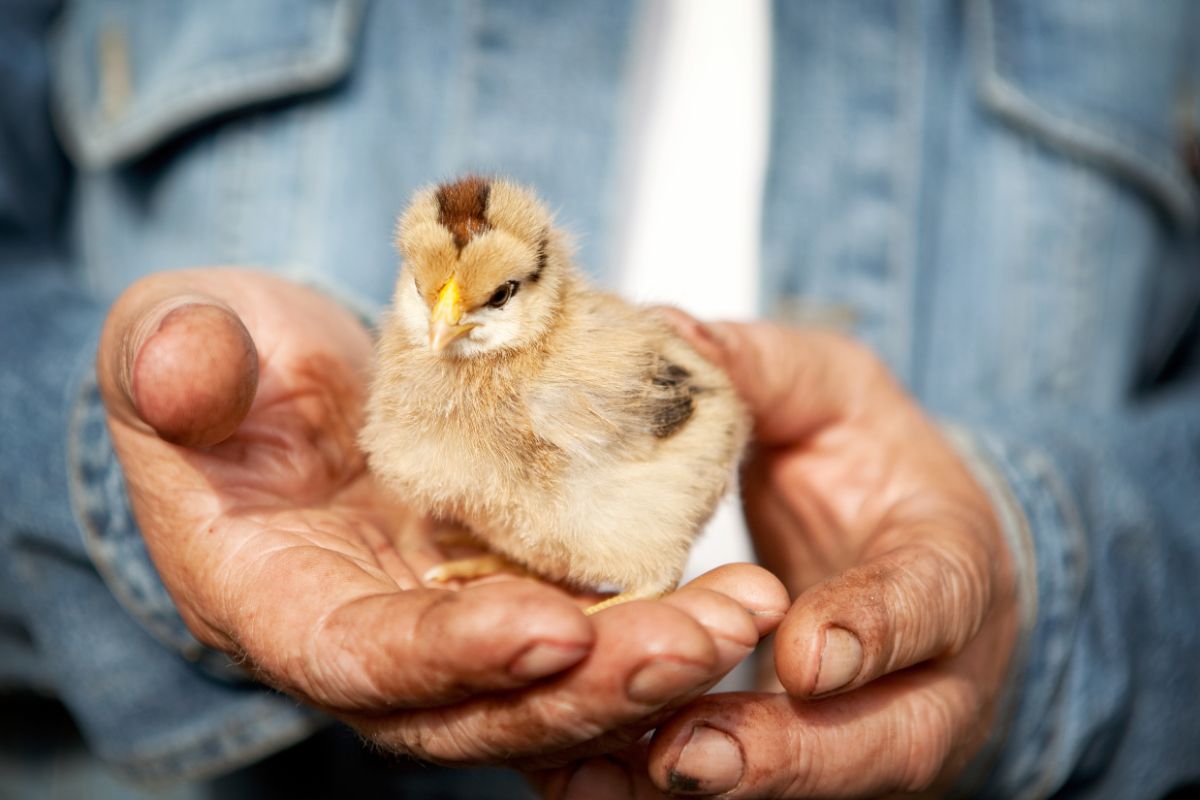
From frizzles to Brahmas, there’s such a wide variety of chicken breeds to choose from that new keepers are often overwhelmed by the selection. When choosing the best breeds for your backyard flock, consider your goals.
Do you want a lot of eggs? Friendly birds? Hardy chickens that can handle themselves well in your local climate?
By getting clear on your goals for chicken keeping, you can more easily decide which chickens breeds are best for you. But, if you’re still feeling confused, why not try out a few different breeds at once? There’s so much to love about all the chicken types we’ve covered today, we’re sure you’ll be delighted by any hen you choose.
If you liked this article, check out our piece on how to use chicken manure in your garden. That’s right, chickens aren’t just great for eggs. They can help you grow healthier plants too!

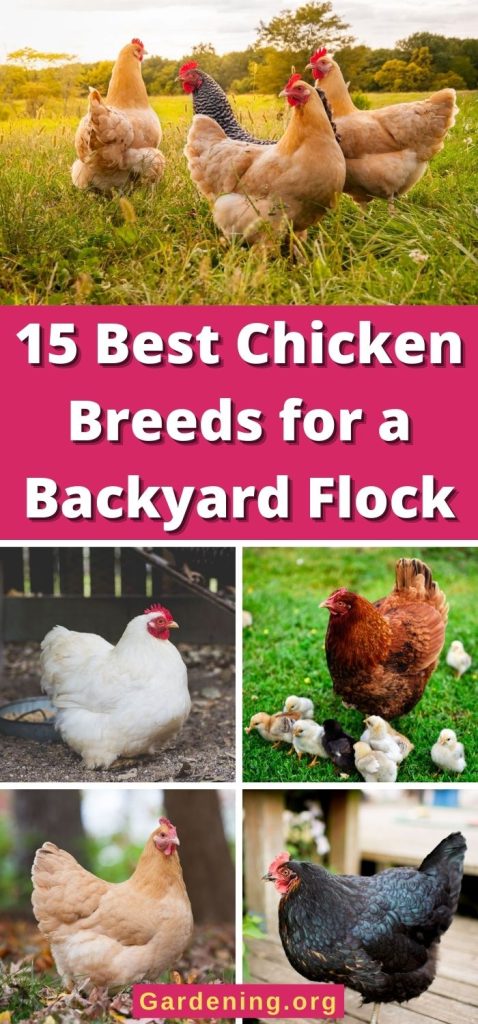
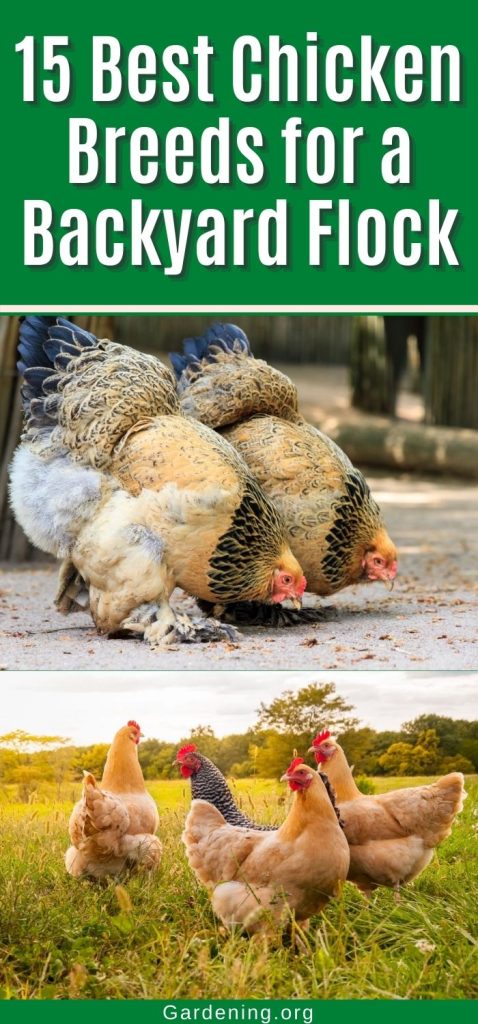
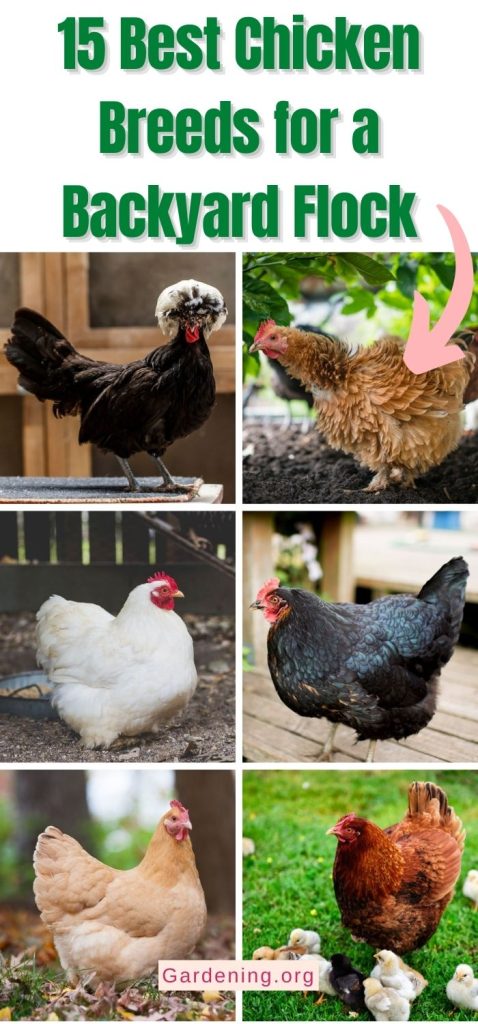

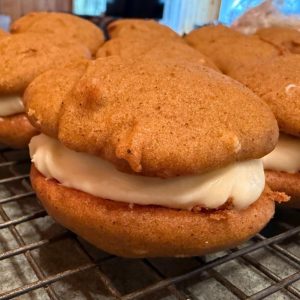



Jim Keeler
Nice article…thank you!
Richie
You left out some great breeds. I love New Hampshires the best. Minorcas and Wyandottes are great birds too. Rhode Island reds lay large and extra large eggs, not medium. Chickens are wonderful pets and home fresh eggs are the best. Oh, you listed barred rocks. Plymouth. Rocks come in many different color varieties.
Mary Ward
Yes, many options with rocks. And many good breeds of chickens! To be sure, no two lists--even on the same subject--will be the same. Even the hatchery catalogs tend to jostle positions a bit. 🙂
Karen Rising
Yes I only get X-Large eggs from my Rhode Island Reds
Melody
Interesting list with a lot of variety. Thanks for mentioning which ones are friendlier with kids as we may try some new varieties this Spring. We have Silkies and Rhode Island Reds. The Reds lay alot of medium-sized eggs but the rooster is downright mean.
Mary Ward
I agree. We've had some nasty run-ins with RRI roosters over the years. And when they stand eye level with your kids, that can be very scary.
Patricia E Campbell
Nice article. I appreciate the inclusion of a rare breed: the Deathlayer. As I'm new to raising chickens, I have never heard of this particular chicken!! They are beautiful!!
Randy Sivley
I've had a flock for 10 years. Started with 3 leghorns in a homemade tractor pen that I tried to move around. The problem was I live on the side of a ridge line. I built a wire pen and it started. I now have 30+- hens, my #1 rooster, his replacement, Edward is 8 years old and still going strong and 1 extra RIR rooster that needs to go.
I get 12-18 eggs a day and I give them to people that need them.
Raising chickens is like everything else in life; it's real and it's fun but sometimes it's not real fun.
I highly recommend that you not mimic some of the online, speach giving, book writing chicken people. They can cost you money.